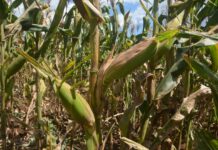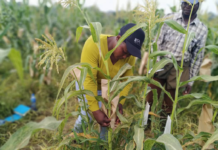Harvesting crops is an essential step in the cycle of agriculture, as it allows farmers to turn their time and hard work into consumable products. This process is of utmost importance, as a successful harvest can hugely impact a farm’s profitability and sustainability. However, harvesting crops can be labor-intensive, and various techniques and strategies can help farmers make their harvesting process as efficient as possible.
There are numerous ways to ensure an efficient harvest, from equipment selection to crop preparation. Techniques such as mechanization, selective harvesting, and precision agriculture can help farmers increase crop yields, reduce losses and maintain production levels throughout the year.
Learning and implementing the different tactics can help farmers save time and money while still seeing promising outcomes. This guide will provide an overview of the most efficient methods for harvesting crops to increase or maintain yields.
- Invest In The Right Tools
Mechanical harvesting is the way for medium to large farms looking to maximize efficiency and yields. Investing in the right harvesting machinery and tools can greatly reduce labor costs, save time, and increase crop yields. Purchasing a mechanical harvester, such as a self-propelled harvester, stripper harvester, or head harvester, can save farmers time and provide a higher-quality crop with reduced losses.
For harder-to-harvest crops, such as peanuts, robotic harvesters can be programmed to recognize the desired size, maturity, and colors of the crops with improved accuracy over manual labor. Investing in the right harvesting tools can save the farmer tens of thousands, if not hundreds of thousands, in labor costs and provide greater, more efficient yields.
- Use An Optimized Harvesting Pattern
Harvesting crops requires careful planning to ensure that yields are maximized. Waiting for the right time in the season to harvest ensures that crops reach their full potential. Planting and harvesting schedules should be determined by seasonal variations, considering temperature, rainfall, and light. Knowing when to harvest will help maximize crop yields and maintain quality standards.
Crops should be harvested when ready, meaning when the fruits and vegetables have reached their full size, the colors have developed, or the plant parts are correctly mature. In addition, consider harvesting the crops before insect or disease infestations, such as using insect traps or inspecting crops to ensure they’re free of diseases.
Avoid damaging the plants by using specialized cutters and pruning tools when harvesting. With careful planning, optimized harvesting schedules, and selective harvest techniques, crop yields can be maximized.
- Monitor The Weather
Monitoring the weather is vital for successful crop harvesting. Keeping an eye on water levels, temperature, and sunlight ensures that crops will receive the conditions necessary for successful growth. High temperatures can cause dehydration, leading to wilted plants or patches of dry soil. Too much or too little water can lead to oversaturation or drought, resulting in stunted growth or even low yield.
Additionally, sunlight is an important factor in crop harvesting. Too much exposure to sunlight can lead to scorched plants, which can reduce yields. Monitoring the weather helps to ensure that crops receive enough water, temperature, and sunlight to remain healthy and capable of producing consistent yields.
4. Utilize Technology
Modern technology has revolutionized crop harvesting. New tractors, combines, and harvesters are more efficient for harvesting large volumes of crops quickly and efficiently. GPS-guided tractors and advanced harvesting machines allow farmers to cover a wide range of terrain with precision and accuracy, cutting costs and increasing efficiency. Remote-controlled sensors can monitor crops and irrigate fields to improve yields.
Modern farming tech can also help farmers accurately predict yield outcomes by collecting data on weather, soil types, and other environmental conditions. Technology has made harvesting more efficient and cost-effective, allowing farmers to increase their profits.
5. Train Your Workforce
Training and educating workers is key to running a successful farm operation. It is important to provide employees with up-to-date knowledge on crop cultivation, pest, disease management, harvesting, and post-harvest processing to ensure that all materials are handled efficiently.
Training should cover topics such as the use and maintenance of the necessary equipment for the job, the harvesting of the different types of crops, safety and hygiene, and the documentation of the harvested material. Furthermore, educating workers on the economic and environmental benefits of efficient harvesting of crops can help ensure that the entire workforce is aware of the importance of efficient harvesting.
- Take Extra Care
For optimal crop yields, it is important to take extra care with the conditions in which crops are grown. Ensure crops are kept in optimal conditions, such as having sufficient water, adequate sunlight, and appropriate fertilizers. Ensure that weeds and pests are regularly monitored and controlled.
Additionally, practice crop rotation to ensure that soil fertility is maintained and reduce the risk of crop diseases. Furthermore, it is important to use good-quality seeds and follow proper planting techniques to provide the best yield. Lastly, practice good post-harvest management to reduce crop losses.
By following these steps, farmers can ensure that crops are kept in optimal conditions and maximize their yields.
Written by Taylor Thompson, a Digital PR Specialist representing AKRS








